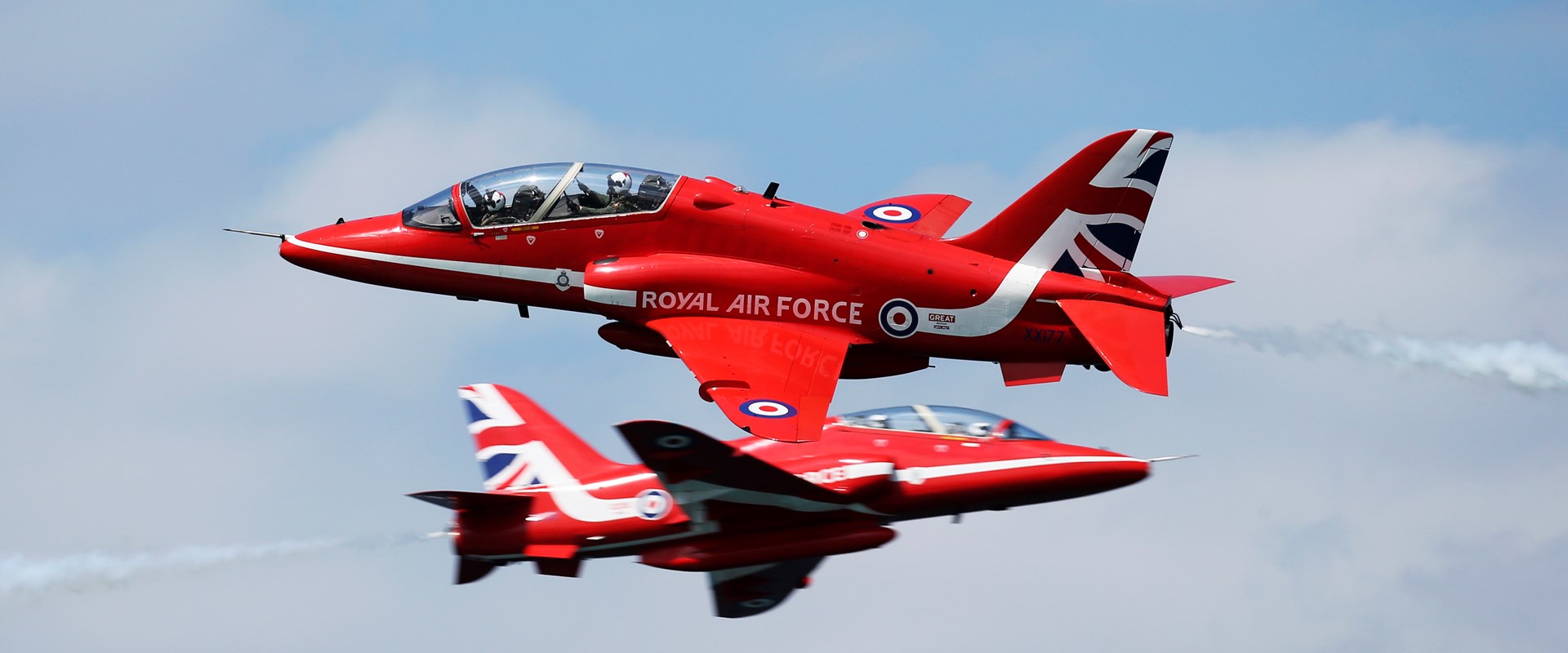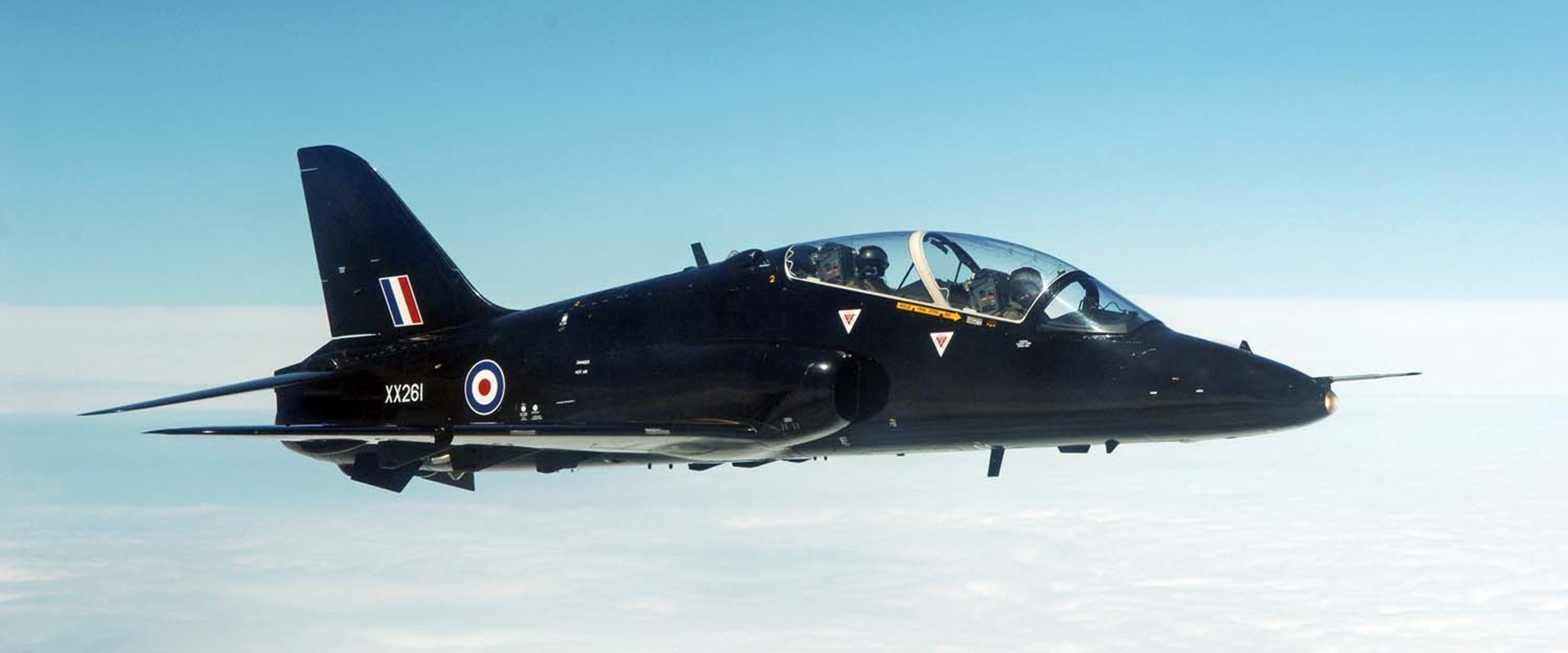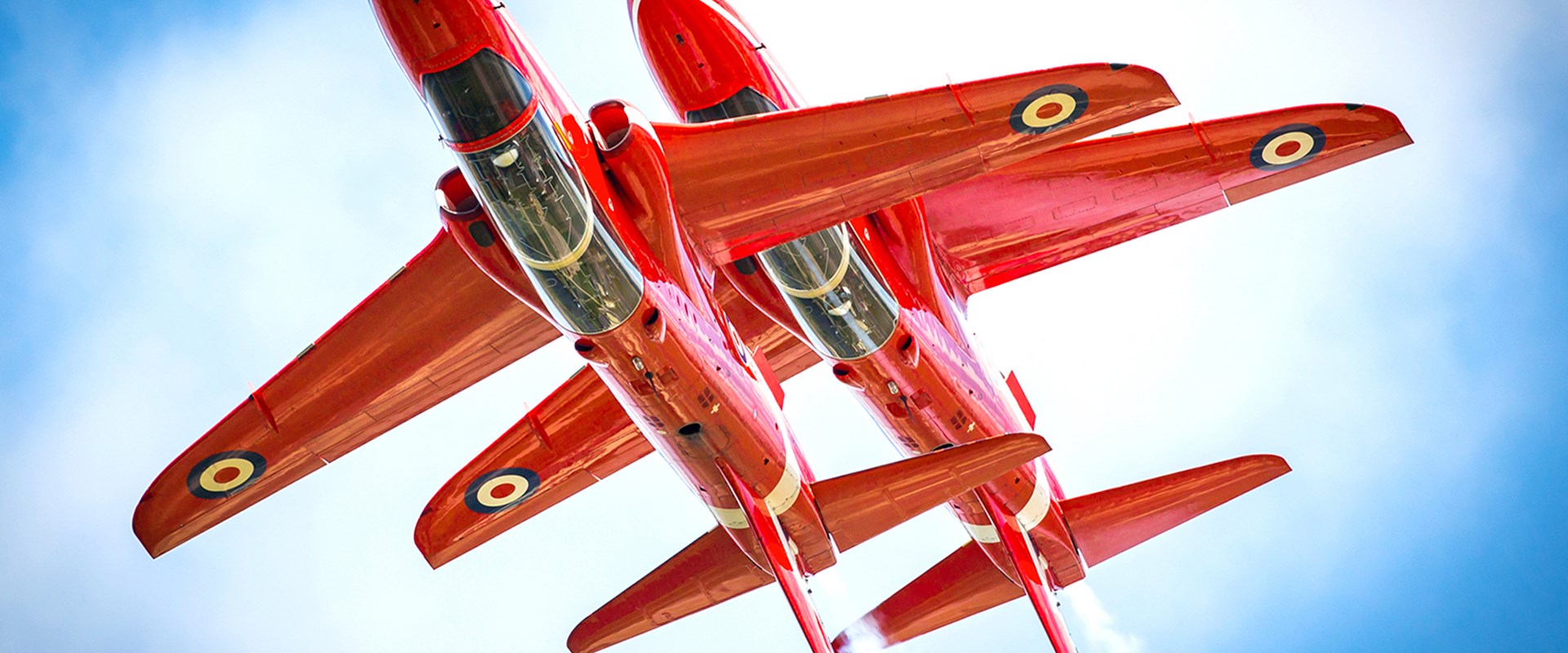Key in a search term below to search our website.
Key in a search term below to search our website.

© MOD Crown copyright
The world famous Red Arrows conduct a daredevil close pass manoeuvre during display training in Greece.
The Royal Air Force Aerobatic team The Red Arrows deployed to Andravida and Tenagra in Greece to begin Exercise Springhawk.
The exercise runs from the 19th March until 05th May in Greece, and will consist of the Red Arrows performing their 9 ship display three times a day over various datums in order fir the display to meet the high standards expected for the display season. The end of the exercise will be marked by the pilots being awarded Public Display Authority which will allow them to display in public and wear the iconic red suits.
The BAE Systems Hawk is a British single-engine, jet-powered advanced trainer aircraft. A stunning pair of Hawk wings with the iconic RAF Red Arrows livery are on display in the new Explore gallery at the National Museum of Scotland.
RAF service
The Hawk entered service in 1976
Made in
UK
Made by
BAE Systems
Dimensions
Wingspan 9.39m, length 11.9m
Top speed
632mph (1,000km/h)
Engines
Rolls-Royce Turbomeca Adour turbofan
Acquired
2016
Museum reference
On display
Explore, National Museum of Scotland
Did you know?
Nearly 1,000 Hawk jets have been sold to 18 operators around the world.
The Hawk first flew in 1974 and entered Royal Air Force (RAF) service in 1976 as an advanced flying trainer and a weapons training aircraft. Hawks are used to teach operational tactics, including air combat and low level operating procedures, to pilots destined for the fast jet squadrons.
The Hawk is a strong and rugged aircraft designed to cut training and maintenance costs. It has been widely exported as a trainer and single-pilot ground attack aircraft. The RAF has two types of Hawk in service: the T1/T1A and the T2. The T1/T1A remains in service with 100 squadron and the RAF Red Arrows aerobatics display team.

© MOD Crown Copyright
The Hawk is an advanced trainer with a two-man tandem cockpit, a low-mounted cantilever wing and is powered by a single turbofan engine. Unlike many of the previous trainers in RAF service, the Hawk was specifically designed for training. The Hawk has been praised by pilots for its agility, in particular its roll and turn handling.
Like our domestic vehicles that require maintenance, the Hawk T1/T1A aircraft in service need regular maintenance and parts replacing. There is a pre-set fatigue life for Hawk wings which is monitored by instruments and when the wing has exceeded that limit then they need to be replaced.
Originally, our Hawk wings had a black livery but they were painted in the iconic RAF Red Arrows livery for the aviation display in the Explore gallery at the National Museum of Scotland. Most of our aircraft collection is displayed in our newly redeveloped hangars at National Museum of Flight, East Fortune Airfield.
The dual control BAE Systems Hawk T1A has been used by the RAF Red Arrows display team since 1979, replacing the Folland Gnat. The aircraft are essentially the same as those flown by Advanced Flying Training students, with the exception of smoke generation modifications and a slightly uprated engine which gives a faster response time.
The smoke generation system pumps diesel mixed with appropriately coloured dye into the jet exhaust to produce the colourful vapour trails that the Red Arrows are famous for. These trails are used mainly for flight safety reasons so the pilots can judge wind speed and direction whilst performing their displays. However, the effects of the trails also look good, enhancing the show for the audience on the ground. Each aircraft can carry enough diesel and dye to create five minutes of white smoke, one minute of red and one minute of blue during the display.

© MOD Crown Copyright
The Red Arrows display is carefully choreographed by the team leader and is changed each year. There are three types of display – full, rolling or flat – and Red 1 decides which one to fly at an event depending on the weather. The full display is 21 minutes in duration, featuring a first half of synchronised formation aerobatics followed by a more dynamic second half.
Header image: The world famous Red Arrows conduct a daredevil close pass manoeuvre during display training in Greece © MOD Crown Copyright .